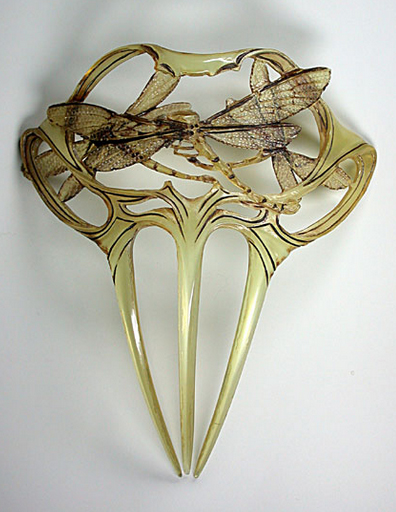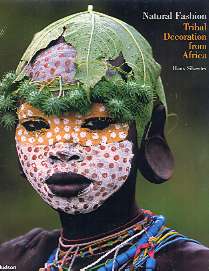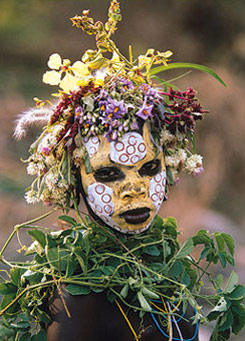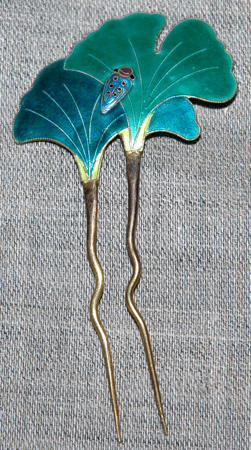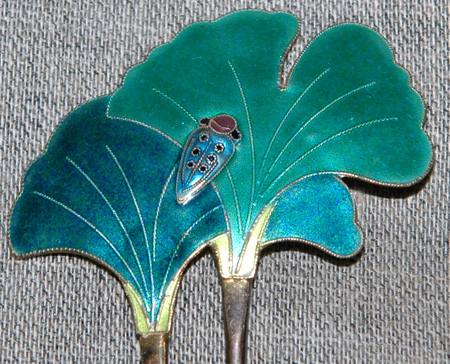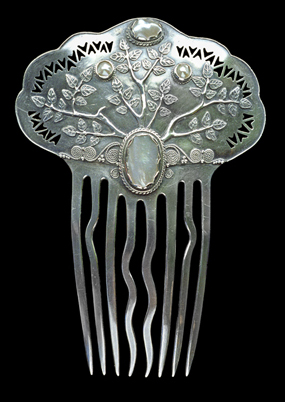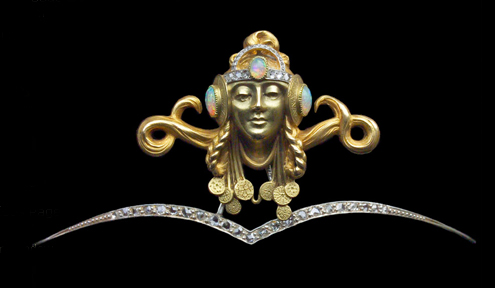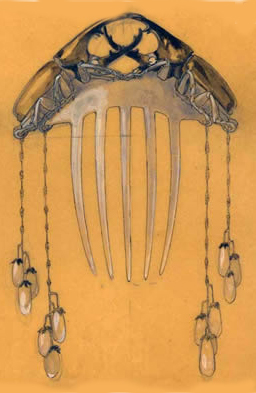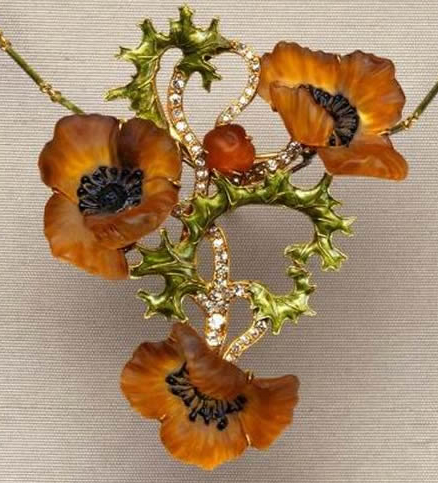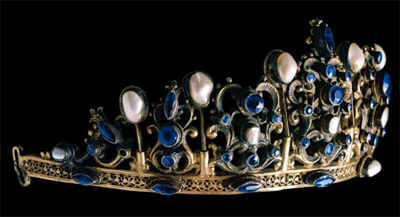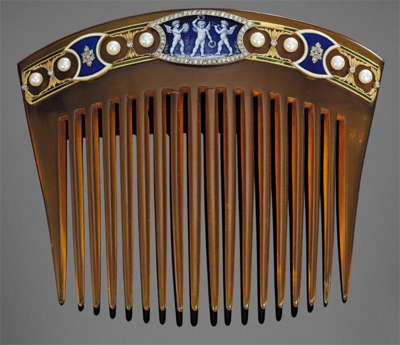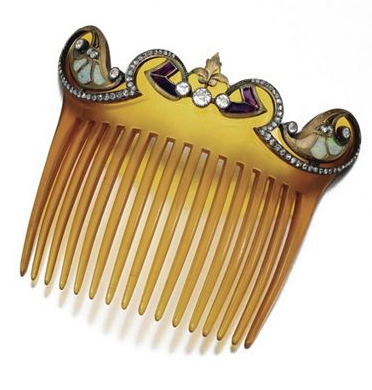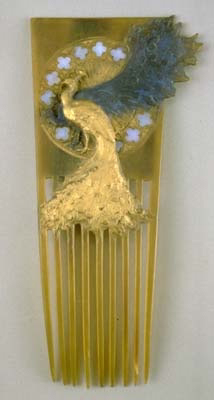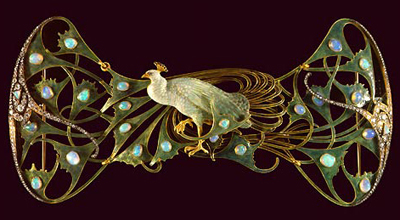Par le Musée Creative
L’Art nouveau est un mouvement artistique qui naît en Europe à la fin du XIXe siècle et rencontre un succès immédiat. Il se développe même internationalement et prend des noms différents selon les pays qui l’adoptent: Tiffany aux Etats-Unis, Skonvirke au Danemark, Stile Liberty en Italie, etc…Le terme français « Art nouveau » s’est imposé en France et même en Grande-Bretagne.
Ce style s’appuie essentiellement sur l’esthétique des lignes courbes. Ses thèmes de prédilection sont la nature, la femme et la mythologie. De grands artistes comme René Lalique ou Lucien Gaillard ont créé des ornements de coiffures somptueux, très recherchés aujourd’hui. Plus modestement, de nombreux artisans français se sont inspirés de leurs créations et ont façonné des peignes ou des épingles au design très poétique. L’ornement de coiffure Art Nouveau français est le plus souvent en corne claire que l’on peint pour imiter la nature. Il est parfois embelli de pierres, de perles ou de métal précieux comme l’or ou l’argent.
Creative Museum possède une collection exceptionnelle d’ornements de coiffure Art Nouveau. Pour ceux qui veulent en savoir plus, ne manquez pas en septembre prochain, notre prochaine exposition qui sera entièrement consacrée à ce style. Voici quelques pièces à admirer en avant-première.
(You may read the English translation in the first comment.)

French painted horn comb with a cicada

French horn comb, ginko pattern. Silver, rhinestones, green cabochon

French horn comb with silver female profile

French hair slide, painted horn, flower design
Copyright: www.creative-museum.com




